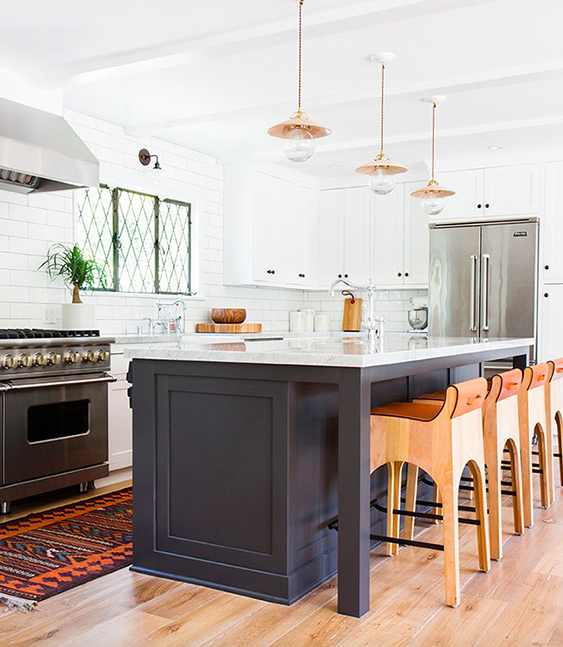Picking the Ideal Kitchen Island Leg for Durability and Performance
Picking the Ideal Kitchen Island Leg for Durability and Performance
Blog Article
The Significance of a Sturdy Cooking Area Island Leg in Producing a Functional Food Preparation Area
A durable kitchen area island leg offers as a basic part in developing a useful cooking setting, providing needed support for both the countertop and different kitchen activities. As kitchen areas advance right into multifunctional locations for food preparation, eating, and mingling, the option of products and style considerations for island legs ends up being progressively essential.
Benefits of Sturdy Island Legs
Supplying crucial assistance, durable cooking area island legs play a pivotal function in improving the functionality and resilience of kitchen islands - kitchen island leg. These legs not only bear the weight of the kitchen counter and any added items positioned on the island, but likewise add to the overall stability of the framework. A well-supported kitchen island guarantees that it remains upright and practical, also under heavy use, which is especially crucial in hectic cooking area atmospheres
Moreover, tough island legs can improve the aesthetic charm of the cooking area. They give a solid framework that can enhance different layout styles, from modern-day to typical. This adaptability enables home owners to tailor their cooking area islands according to individual preference while making sure that the structural stability continues to be uncompromised.
Along with their supportive function, robust kitchen island legs can likewise boost safety and security. A stable island reduces the danger of accidents triggered by wobbling or tipping, which is particularly vital in households with youngsters or elderly people. Solid legs can promote a seamless circulation of activities, allowing for effective meal prep work and social interactions within the cooking area room. Ultimately, investing in sturdy kitchen area island legs is vital for a functional and visually pleasing cooking area.
Materials for Kitchen Island Legs
When selecting materials for kitchen island legs, resilience and visual charm are essential factors to consider. The most typical products consist of wood, steel, and engineered timber, each offering one-of-a-kind advantages.
Hardwood, such as maple, oak, or cherry, is a timeless choice because of its toughness and ageless appeal (kitchen island leg). It can hold up against substantial weight and is resistant to put on, making it perfect for high-use kitchen area atmospheres. Furthermore, wood can be tarnished or painted to complement various kitchen area styles
Steel legs, often crafted from stainless steel or wrought iron, give a contemporary and industrial appearance. They are exceptionally solid and can support substantial loads while being resistant to dampness and warmth, which is beneficial in a cooking location. Steel legs can additionally be quickly cleansed, enhancing their functionality.

Design Factors To Consider for Stability
The option of products for cooking area island legs straight influences the style considerations for stability. When making a cooking area island, it is paramount to assess the weight-bearing ability of moved here the picked materials. Much heavier materials, such as solid timber or steel, generally offer higher stability, specifically under the stress and anxiety of everyday use.
Furthermore, the leg style need to incorporate appropriate geometry to improve stability. A broader base increases the assistance area, lessening the threat of tottering or tipping. Factor to consider needs to likewise be provided to the height of the legs; out of proportion leg sizes can lead to imbalance, endangering the general stability of the island.
In addition, the distribution of weight across the island is vital. Making sure that the leg positioning straightens with the heaviest components, such as countertops and appliances, will certainly even more improve security.
Maintenance Tips for Long Life

Depending on the product of the legs-- whether wood, steel, or composite-- suitable cleaning techniques ought to be utilized. Metal legs might require a light gloss to prevent corrosion and maintain their radiance.
In addition, tightening bolts and screws consistently can ensure stability and avoid tottering. If the cooking area island experiences hefty use, think about enhancing the legs with additional brackets or supports to enhance longevity. Last but not least, using a protective surface or sealant can safeguard versus moisture and discolorations, prolonging the lifespan of the legs. By adhering to these maintenance ideas, homeowners can guarantee their kitchen area island legs remain durable and practical for many years to find.
Choosing the Right Leg Design
Routine upkeep makes sure that kitchen island legs continue to be functional and durable, yet selecting the appropriate leg style is similarly crucial for both aesthetics and assistance. The option of leg design can considerably influence this article the general design and harmony of your cooking area.

Functionality is an additional vital aspect. Thicker legs or those with her comment is here a durable base can support larger countertops and devices, boosting the island's energy. On the other hand, slim legs may develop an airy appearance, suitable for lighter layouts but potentially much less encouraging.
Conclusion
In summary, the importance of tough cooking area island legs can not be overemphasized in the production of a functional food preparation location. These legs offer vital assistance, improve security, and contribute to the general aesthetic of the kitchen.
A tough kitchen area island leg serves as a basic component in establishing a practical cooking setting, supplying essential assistance for both the countertop and different kitchen activities.Supplying necessary assistance, sturdy cooking area island legs play a crucial role in boosting the performance and toughness of cooking area islands. Eventually, spending in durable cooking area island legs is necessary for a practical and aesthetically pleasing cooking location.
Consideration ought to likewise be provided to the height of the legs; out of proportion leg lengths can lead to discrepancy, compromising the general security of the island.
Wooden legs supply heat and a classic appearance, while metal legs provide a modern and industrial feeling.
Report this page